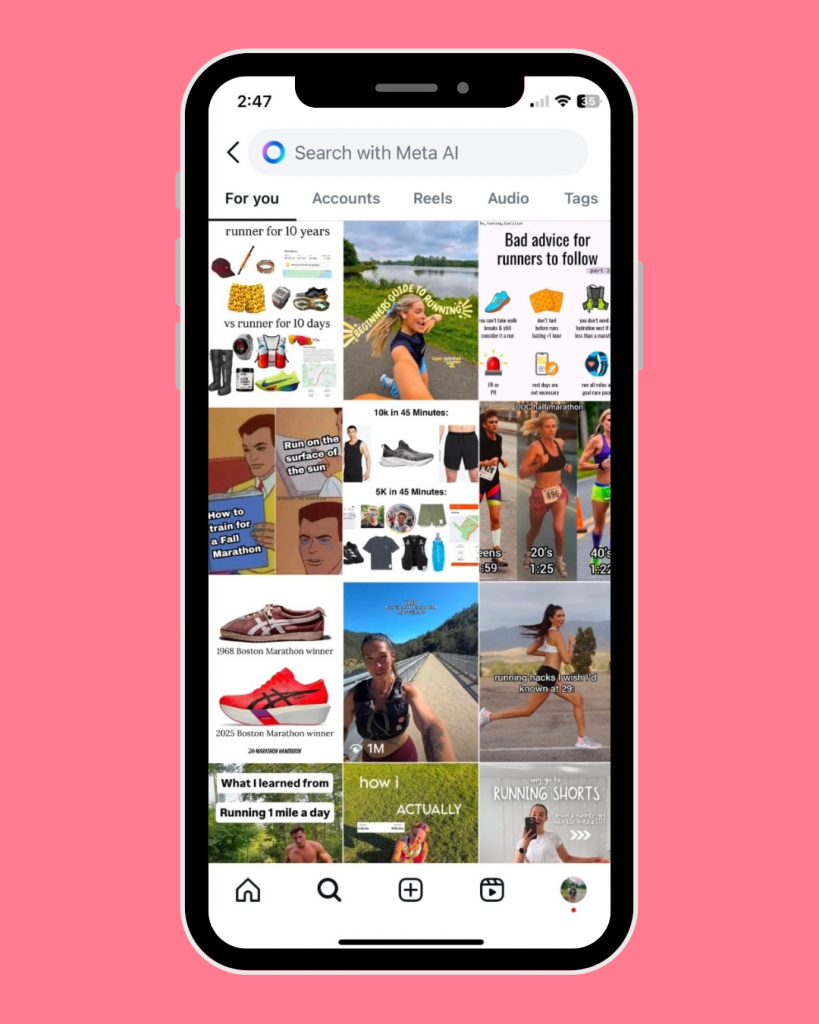Be a runner first, influencer second
September 29, 2025
I was at brunch with my team after a cross country race this month. As the frantic scarfing down of post-race coffee, eggs, and pancakes slowed, the conversation turned to running influencers, or runfluencers for short. Turns out I’m not the only one who’s not a huge fan.

To clarify, I like professional runners posting on socials; I can trust they are knowledgeable in the sport, and it’s fun to see glimpses into their real, non-running lives. And I love a self-deprecating running meme. (cough plus I write my own run blog cough)
But it comes down to the selfie-taking, new-outfit-wearing, somehow-gorgeous-after-a-long-run runfluencing? Here are my thoughts.
1. Runfluencing minimizes the grit needed for running.
Running shouldn’t feel great all the time; there’s beauty in the grind of a brutal run. When I see someone happily vlogging with their hair flowing in the Utah breeze at mile 20, I have to wonder if the effort is really there — or if the pace and distance are honest.
2. Cameras can get in the way.
Whether it’s an e-biking camera crew disrupting the New York City Marathon or a person looking at their phone instead of the trail, filming can put others at risk. It’s hard to be aware of your surroundings when you’re focusing on getting your best angle.
3. Content can create body image issues.
Sure, you can find runfluencers of all shapes and sizes, but let’s be real. Social media — running related or not — is toxic when it goes to body image. Every runner is different, but when a majority of runfluencers are extremely fit and/or promote obscure diets, even the most body-confident people will start having some negative thoughts.
4. Running myths can spread.
As the number of runfluencers grows, so does the amount of questionable or even downright wrong running advice. Some influencers don’t yet have enough running experience to make a platform based on running advice, and uneducated or bad advice can get people injured.
5. Running “hacks” don’t exist.
I’m willing to bet that nearly every running “hack” on social media is fake. There are no shortcuts in running, and all those fancy expensive recovery tools and fuels are only beneficial if you already have solid training. Get lots of easy miles, add some faster ones, strength train, and eat and sleep enough, and you’ll be good to go. Too bad this doesn’t look good or offer many brand deals on Instagram.
With all that said, I don’t want to complain without offering solutions. If you must document your running as an influencer, make sure the actual running takes priority. Show the unfiltered life of a runner, including your bad runs and that day you ate an entire box of cereal after a long run. Offer tried-and-true advice rather than promoting the latest product just because it’s trendy. Maybe even film a run in a last-day-before-doing-laundry outfit. In short: be a runner first, influencer second.
